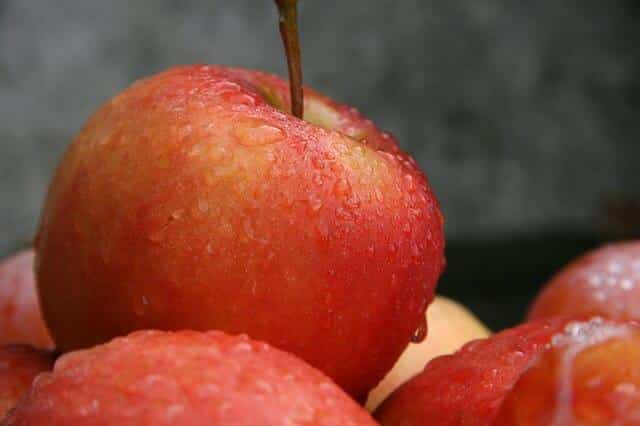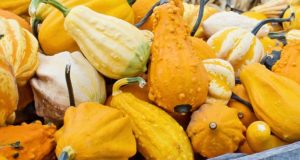While the taste of fresh apples can’t be beat, extending the shelf life of apples has been practiced for centuries as a method to have fresh fruit available when it is not in season.
Traditionally, whole apples (typically a variety bred for winter storage) are stored in a root cellar or a cool, dark and relatively humid location in order to preserve them for eating during the winter. Canned apple rings, canned applesauce, apple butter, and dried apples are other traditional ways to preserve apples even longer, for a year or more. So how would you store apples for up to 30 years?
If 30 years sounds like a long time to store apples, it might surprise you to know that “fresh” apples in the grocery store may be nearly a year old when you buy them. Modern developments in commercial food storage allow growers to store produce with a chemical named 1-methylcyclopropene, which blocks the ripening agent of apples (ethylene) and can extend the shelf life of other vegetables such as broccoli, lettuce and carrots. The result is a crop of fresh picked apples that can be stored for ten months or more.
Storing Apples for 30 Years
Dehydrated apple rings stored in an airtight container with an oxygen absorber packet have a shelf life of up to 30 years while maintaining nutritional value.
Discover More Than 1,000 Off-Grid-Living Tricks!
Some important considerations in storing apples using this method: 1) The apples should be dried to the point that they have 10 percent or less moisture content, so they will be somewhat “crispy.” The reason this moisture content level is important is that there is an increased risk of botulism when you use an oxygen absorber with a higher moisture content. 2) the shelf life will be longer if your storage location has a moderate temperature and reduced light. A cool basement would be ideal, while a hot attic or room which fluctuates in temperature will shorten the shelf life of any stored food.
Here’s how to do it, step by step:
- A dehydrator with an electric fan is recommended.
- Peeling is optional; we wash the apples and then slice into one-fourth of an inch slices without peeling.
- We do not use any anti-browning agents. Without an anti-browning agent, the apple flesh will darken a bit; our apples once dry are usually a light tan or beige color.
- Drying time will depend on the humidity and your dehydrator.
- Once dry, let them cool for an hour, and then place temporarily into gallon-size plastic bags to “season” the dried slices for a week. Seasoning is not flavoring in this instance, but it accomplishes two things: 1) It distributes any remaining moisture evenly between slices, and, 2) It alerts you if there is too much moisture in your dried apples. If you have too much moisture, you will see condensation on the inside of the sealed bags (in which case you need to dry some more).
- Once the apples are seasoned, pack into airtight containers. Sealed plastic bags are not ideal for long-term storage. We use glass jars.
Dried apples in a glass jar will last about a year in your kitchen cupboards. This is about the same time as canned apple product. However, in a cool dry and dark place like a cellar, these jars of dehydrated apples will last five or so years without any detectable change in taste. Your kitchen cupboards are simply too exposed to light and temperature fluctuations to be useful in storing items more than a year.
For REALLY long-term storage, up to 30 years, put an oxygen absorber packet in the airtight container when packing, and again, store in a cool, dark and dry place.
What advice would you add for storing apples long-term? Share your tips in the section below
 Off The Grid News Better Ideas For Off The Grid Living
Off The Grid News Better Ideas For Off The Grid Living




